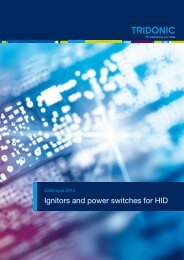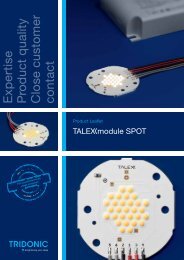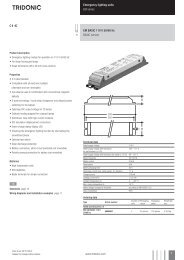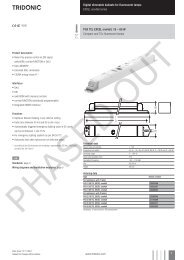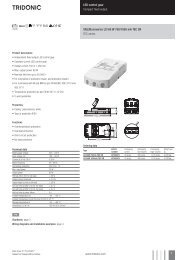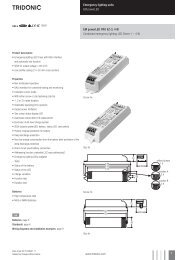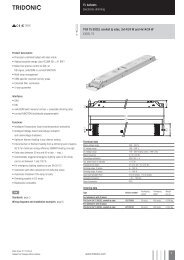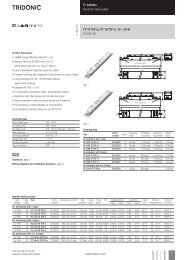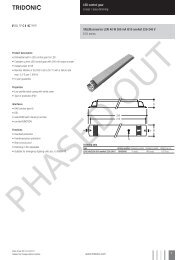You also want an ePaper? Increase the reach of your titles
YUMPU automatically turns print PDFs into web optimized ePapers that Google loves.
YCIE Colour Space Chromaticity Diagram Assembly of LED Colour0.90.80.70.60.50.40.30.20.10MacAdam ellipseyellowPlanckian curve0 0.1 0.2 0.3 0.4XMacAdam ellipsedaylight white (6,500 K)0.5 0.6 0.7 0.8YellowA BDaylight whiteA BRelative intensity (%)Relative intensity (%)100806040200400100806040200400440 480 520 560 600Wavelength (nm)AA440 480 520 560 600Wavelength (nm)BB640 680640 680Colours have a special influence on brand recognition. It is hardlysurprising then that great importance is attached to this aspect.The most frequently used method for assessing colour renderingis the MacAdam ellipse. Colour differences can be detected or not,depending on the precision with which the colour quality is specified.The picture shows the colour locations of the MacAdam ellipse forthe colours yellow and daylight white in the CIE chromaticity diagramof 1931. In addition to the colour location in the CIE chromaticitydiagram, the intensity of the die and of the glob-top ( colour conversionlayer ) is shown. The Planckian curve defines an area of the chromaticitydiagram in which there is no discernible colour difference for the humaneye in terms of white light. This phenomenon is used to definethe phosphor to ensure the optimum white light impression.This means that T modules are available withdefined colour temperatures of 3,000 K ( warm white ),4,200 K ( neutral white ) and 6,500 K ( daylight white )to provide light of impressive uniformity. New encapsulationmaterials with reduced yellowing are beingused to achieve higher luminances and thereforeoutstanding luminous flux stability.The 140° wide-beam characteristic also helps to ensurehomogeneous illumination with a small mounting depthand reduced number of light sources. In addition, theoptimised thermal management of chip-on-board technologyreduces the temperature of the light-emittingdiodes and therefore improves their reliability.The wide range of high-intensity LED modules in white,colour or RGB underlines the power of innovation of<strong>Tridonic</strong> in this pioneering sector.T <strong>Catalogue</strong> <strong>2010</strong>www.tridonic.com17





